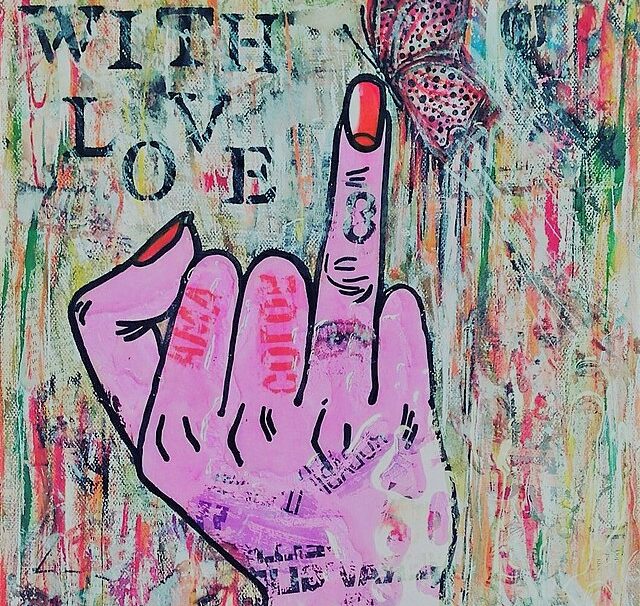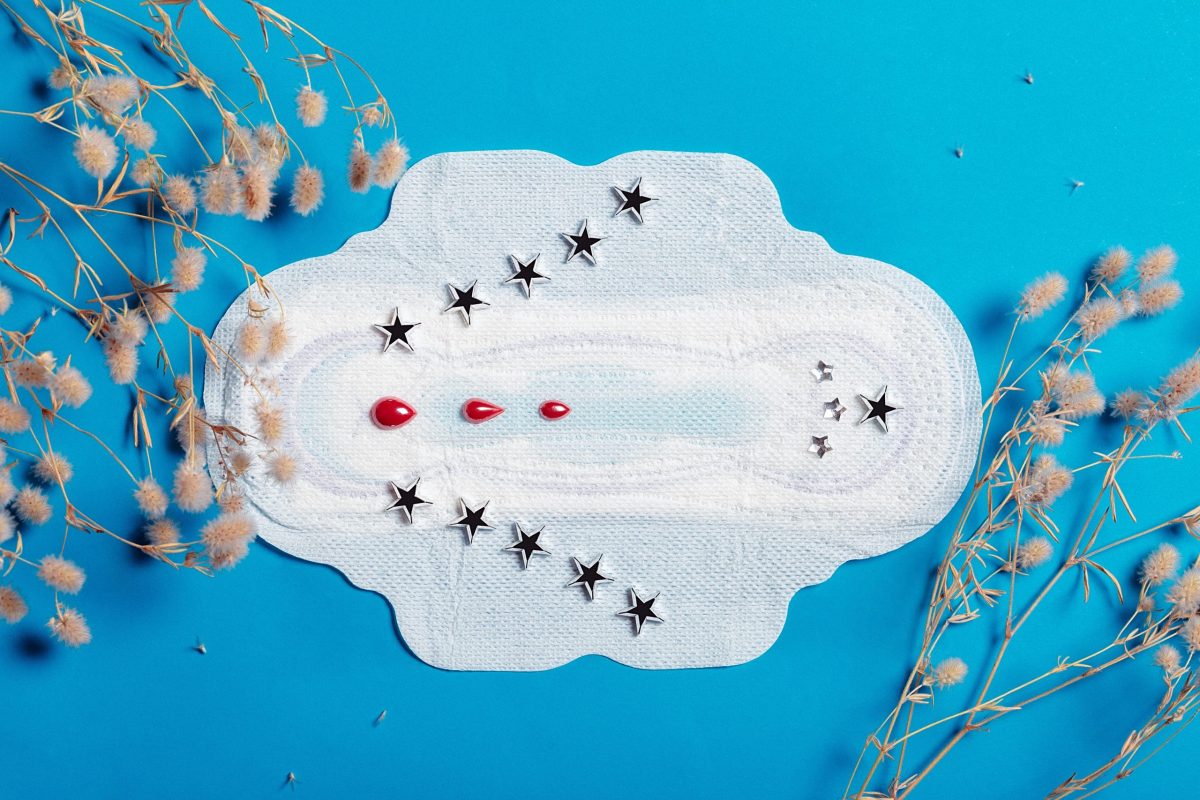interviews
Claire Messud on the Power and Pitfalls of Female Friendship
The author of ‘The Burning Girl’ discusses what it means to be a girl and a woman in America

Over the course of Claire Messud’s career, she’s made a practice of chronicling women’s lives, not the commonly showcased milestones of marriage and early motherhood, rather the in between moments — twenty somethings failing to settle on a predetermined path, women finding inner passions late in life. Her new novel, The Burning Girl, records its two main characters at another brink: the moment, the summer, between girlhood and adolescence, when Julia and Cassie quickly migrate from dwelling in fantasy worlds to meeting firsthand the dangers that befall young women as their bodies and minds mature.

Though The Burning Girl fits into an emerging canon of literature delving into the passionate bonds between young women, it would be a mistake to reduce this genre to simply “female friendship.” Rather this book provides evidence that the stories of young women can provide a kaleidoscopic lens through which to discuss the history of womanhood, how American culture treats teenagers, and the unique ways young people approach issues of social class.
Messud is as eloquent to converse with as her novels are to read. We spoke on the phone about the primal allures of abandoned places, how teenagers create social taxonomies, the persistence of the Madonna-whore complex, and, of course, the ragged terrain of friendship between girls and women.

Rebecca Schuh: Early in the novel, we get a sense that Julia’s friendship with Cassie is tinged with a casual possessiveness. Do you think that there’s a possessive nature to the intense friendships of childhood and adolescence?
Claire Messud: I have no objective proof that that is so, but from a subjective experience and anecdotal knowledge, yes. I realize that the passions of the girl I was and the girls I’ve known, the passions of those early adolescent friendships are like being in love. The intensity of it, this sort of complicated sense of precariousness and loss if another friend comes into the equation — can a group of two expand to be three, or does that mean that somebody will be ousted?
RS: I love that there’s really this renaissance of not just the intensity but the complexity of the friendship between women whether they’re young or older.
CM: I imagine you probably read the Elena Ferrante books, I did too of course, and that’s just one of a number of going back even some years. Sheila Heti’s book, which is about a character named Sheila Heti and a number of her relationships and friendships but central in the book is her close friendship with her artist friend Margeaux. It’s mostly loving and then sometimes not. With our closest friendships certainly, sometimes we know we can be close to somebody because we can have a fight with them. The closer you are, the more complicated it gets. The challenges and joys are intertwined with each other and inseparable.
The closer you are, the more complicated it gets. The challenges and joys are intertwined with each other and inseparable.
RS: When the girls sneak into the members only quarry swimming hole, Julia notes that they’re gaining this awareness of their families relative places in the financial hierarchy of the city. When do you think that teenagers start becoming aware of those class differences?
CM: Maybe in New York there are seven year olds who are aware of social class differences. But even if children are aware that your house is different from my house, it usually isn’t framed in terms of a broader social context. I think one of the things that happens as we enter adolescence is we become aware of the world, the world beyond ourselves and ourselves in the world, literally self-consciousness. And that involves sort of trying to understand a taxonomy of the world. And social class, even if it’s unconscious, becomes part of that.
Our daughter is now 16 and I can’t remember exactly whether it was sixth or seventh grade, I realized that in her head, she had a hierarchy of popularity for the entire class, she could have said “I’m 37th,” it was so precise. And that wasn’t about economics, but an awareness of the economic disparities of peoples lives was part of the algorithm ultimately. It was part of this broader social awareness that they were coming into at that time.
RS: It’s so fascinating to hear it spoken about like a taxonomy. And then dating comes into play with popularity.
CM: That’s the moment where you lose agency because somebody else is making a choice. The boy or girl, whatever, that you fancy is either going to fancy you back or is going to choose somebody else. And that factors into the hierarchy. The realities are so multifarious and complex and interesting, and you know you do see kids who assess all that and very actively although quietly opt out, who sort of put on a pair of sweatpants and a big sweatshirt and have their hair fall in front of their eyes and are just like you know, I’m not going there. I’m not interested in this procession, this dance, this taxonomy. I’m not going to do it right now. I’m stepping aside.
Why Are Friendships Between Teen Girls So Radioactive?
RS: It seems like there’s a universal jumping off point for that sense of social mapping.
CM: I’m sure it’s also related to hormones and stuff because by fifth grade, there are kids who are physically growing up. That simple animal thing of your body factors so much into how things play out. You have no control over it, whether you shoot up really early or whether your palms sweat. You don’t have any control over those things and yet they have such a role in where you end up in a social hierarchy.
RS: Such a big part of the novel was this idea of girls learning to be afraid, and talking about the body — those two ideas are so closely intertwined. How do you think that girls bodies changing affects or even instigates the kind of process of becoming fearful?
CM: I think that it’s two sides of the same coin in a way. Our society gives such mixed messages. On the one hand, girls are encouraged to celebrate and adorn their bodies and flaunt them, and then on the other, are encouraged to feel awkward or self conscious or afraid.
In conservative religious cultures, girl children can wear whatever they want until they hit puberty and then they must dress modestly. They get physically covered up. And we in our culture do an almost metaphorical version of that. On the one hand we say no, wear whatever you want, wear that tiny tank top, those shorts, it’s your right as a girl, but instead we then have this list — don’t go out on your own at night, don’t get in a car with a stranger, there’s this list of prescriptions or circumscriptions around girls lives which are abstractly analogous to covering a girl up, if that makes sense. We put limits in a different way. And the limits aren’t on her actual physical body in the world but they’re on her movement in the world.
RS: One of the most unsettling aspects of the novel for me was the part where Cassie’s stepfather wants this unexplained control over her lifestyle, and it seemed like that’s another similar note, that kind of control. Where do you think that desire, on an either personal or wider cultural level, to control young women comes from?
CM: Historically, if you go back to earlier centuries in our culture, women were chattel, women were property. And if your property was marred or harmed, your own value was less. There’s this sort of underlying sense that daughters have a value, but if they are compromised sexually then that value, it’s not just the value goes away, it’s something worse. That’s such an underlying history that feminism has battled against for well over a century. There are people who retain vestiges of that in whatever form.
Women were chattel, women were property. And if your property was marred or harmed, your own value was less.
RS: The girls spend a portion of a novel breaking and entering into the abandoned women’s asylum, how did you choose that setting as a place for their playacting and fantasies?
CM: There’s a literal answer and there’s a more metaphorical answer, and the literal answer is, we spent a year in Berlin, and in and around Berlin there are a lot of abandoned buildings with extraordinary history and I became sort of obsessed with some of those abandoned buildings. There’s no chicken wire fence, no do not enter signs, there’s just these ruins hanging out there and you can wander through them at will.
Part of it was also this literal interest in the asylum and the notion of what an asylum is. Refugees seek asylum. It’s the same word as the insane asylum. But it is a sort of refuge, and for me there was some sort of metaphorical narrative too, about the girls literally going into the woods, going into their subconscious, going into a shared place of childhood play that is safe and free, and is at the same time the darkest places with this terrible history, this history of suffering, that is specifically about women.
Human traces in a state of dereliction is very interesting to me. I don’t know if you know the work of this photographer Robert Polidori, he’s done these large format photographs of Havana, of New Orleans right after Katrina, Chernobyl and Pripyat. These are places where people have lived and left everything. In Havana the people are still there, the buildings are just incredibly decrepit, but in these other places where people had to abandon their lives in great haste and nature has come in in this sort of extraordinary way. And for me there’s something very haunting and evocative and primal about it. That was part of setting the girls play in such a place because it’s both at once so great and awful, light and dark.
RS: I love what you’re saying about it being a subconscious space where it’s very primal, because the way it’s positioned in the book, it’s the last time they’re truly able to fantasize as children and live partially in that space. I think as you get older, it’s so much harder to inhabit that unrestrained mental space.
CM: I think it is and it’s sort of sad as a parent to watch your children having to let go of that, or feeling it’s time to let go of that space. And you wish for them more time.
Support Electric Lit: Become a Member!
RS: It’s interesting what you were saying about Berlin not having “do not enter” signs. I was thinking about how, in the novel, there’s the quarry and the abandoned mental asylum, and the girls are really experimenting with this idea of who’s allowed in a certain space, whether it’s because of class or because the place is private property. Can you talk about the idea of girls having access to different spaces and how that affected the novel?
CM: That’s a really interesting question. It’s almost like an Escher drawing, I see it in terms of boundaries. I see it in terms of separations between spaces rather than spaces themselves. And the degree to which growing up is about creating or acknowledging boundaries that when you’re younger you don’t, and as we were saying earlier, the ways in which a community, a family, a society is laying out the maps and the border of what and where people can go and what is permissible for them. And Cassie in that sense is somebody who is just not staying in the boundaries. There’s a whole set of things, first Anders Shute arrives in her life and the boundaries such as they were shift and she has no control over that, and sort of can’t believe that’s happening in her own house, in the space that was supposed to be the safest one. And then there’s the second thing — in running away from home, she’s doing something that is very much taboo. Along with other behaviors, then, it puts her beyond the pale of not only her family but also the community itself. And she then becomes somebody who grown-ups are trying to catch and enclose and put back in her cage.
RS: That reminds me of another line that I noted, in the portion of the novel where Cassie and Julia are growing apart, Julia says “Without anybody saying so outright, I was being told that my path was more valuable,” and that line really relates to what we’re talking about, because it’s this idea that Julia’s path is more valuable in part because she’s sticking to the path, she’s not trying to break the boundary as much as Cassie is.
CM: The Julia path is society is smiling on her and saying that’s the valuable path because you’re not breaking rules, but it’s also, back to the middle school popularity stakes, it’s the uncool path. And then as we all remember there are the girls who miraculously and bafflingly sort of cover both tracks. The straight A students who are on all the varsity sports teams yet they also have an edge and are partying and going out with boys early and somehow their parents don’t know that — that’s sort of the 14 year-old version of having it all, managing and navigating both economies. But back to women and bodies and fear, for the broader society there still is this underlying madonna-whore narrative in which the good girls get one set of treats and the bad girls are desirable but dismissible.
There still is this underlying Madonna-whore narrative in which the good girls get one set of treats and the bad girls are desirable but dismissible.
RS: I was talking about that with one of my friends recently, we’re in our twenties, but that complex still lasts. We were joking that the new madonna-whore is the nice girl-party girl complex. It’s still happening.
CM: It’s still going on. Old habits die hard. It’s still in there, no matter how much we think things have changed.
RS: As Cassie and Julia grow apart there’s this evidence that Julia’s idealized version of Cassie is different from the school’s social perception of her, among the rest of her peers, and that both of those are different from the real truth at the core of Cassie’s life. How did you feel that those different perceptions, both Julia’s and her peers, affected Cassie’s path as a character?
CM: There are lots of things I tried to write about in this book and one of them was the degree to which we make up stories and invent stories and internalize stories that we’ve heard. There’s a truism that our stories are the reception of our culture. It’s a two-way mirror, and those stories also create the culture. That happens on the micro level as on the macro level. If I believe that my friend is no longer trustworthy because of one incident, or two incidents, and then I thought she was loyal and kind but actually she’s two faced and horrible, and you rethink every experience through that lens and suddenly everything, the whole story looks different. What I was trying to write about, is the feeling of, “I know how that story goes or I know what happens next, I’ve heard this before.” And we don’t really. And because we don’t pay full attention, we don’t ever really know.
RS: Later in the novel there’s Julia relating the parts of Cassie’s story and it almost feels omniscient. She’s the narrator and she acknowledges that, but I got the sense that there was a level of fantasy to how engrossed she was in Cassie’s mind.
CM: It isn’t even her recounting what Cassie told her. It’s totally third hand. I’m glad you had that experience, moments of thinking we’ve slipped into the third person narrative, and then remembering, no we haven’t. This is Julia making this up. And there’s no way that Julia had access to these details. That’s what I feel like we’re doing in our lives.
RS: There’s this fundamental unknowability to the portion of the story where Cassie leaves for Maine, because you’re hearing it through Peter, and you’re hearing it through what Julia thinks of what happened, but it’s going back to that subconscious dream because it’s not concrete, which is what made it so gripping, that there’s so many possible ways it could have gone.
CM: I used the word mystery earlier and I wanted this to feel open. I am now fifty. If you had asked me twenty years ago about a trajectory of life, I would have said well you learn more and more and you understand more and more and things become clearer, and you get through life and you can say you understand these things, this is true and this is not true. And actually no, my experience of certainly the last decade is that I think I know less and less. People and things I thought I knew are just more and more mysterious. And that’s sometimes amazing and sometimes awful, but I am learning still to look differently at the world. There’s so much we don’t know. We just don’t know.










